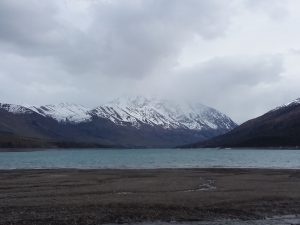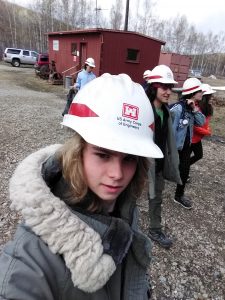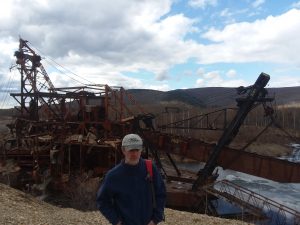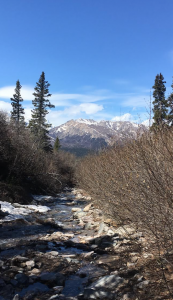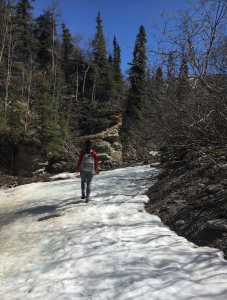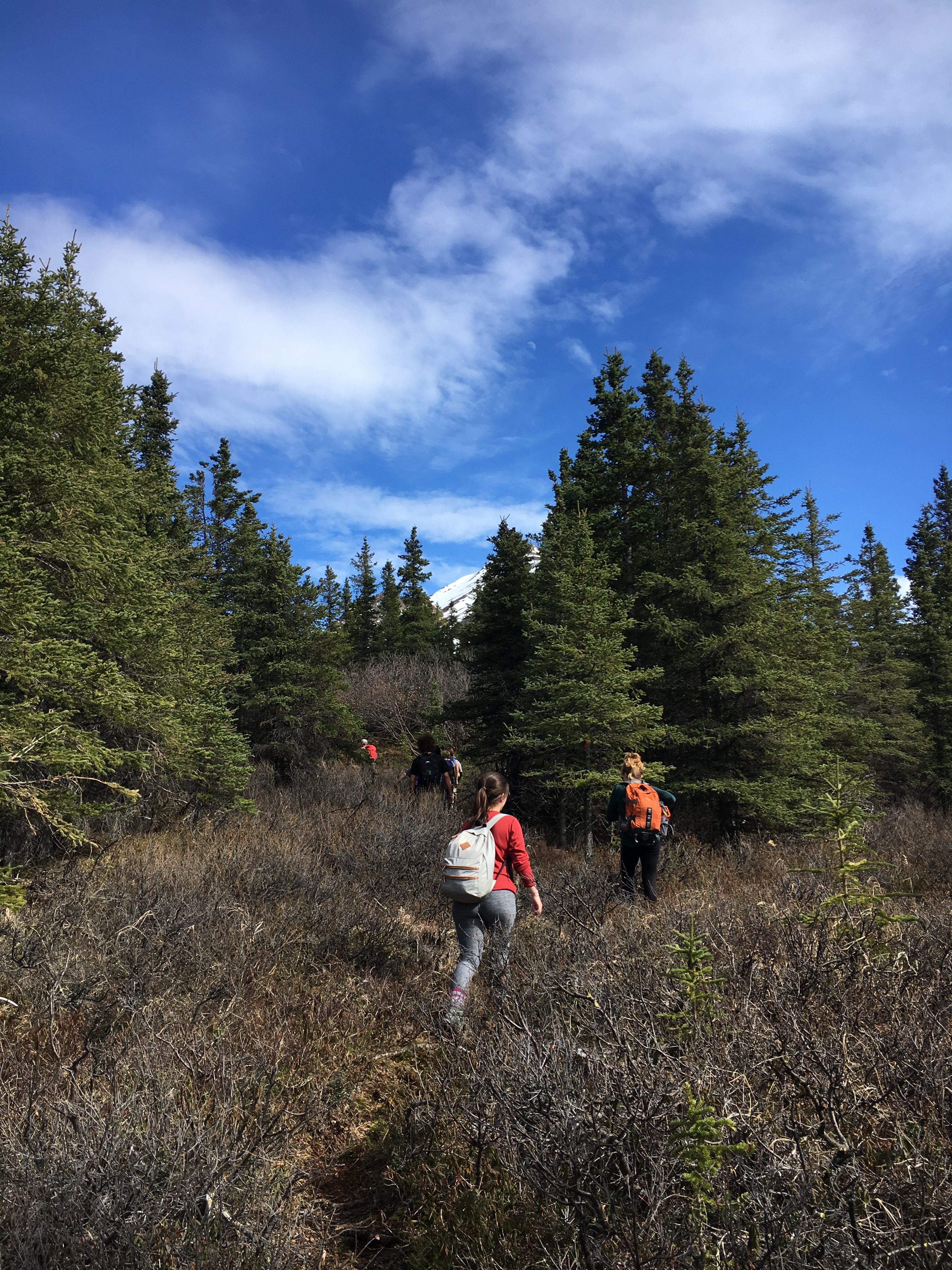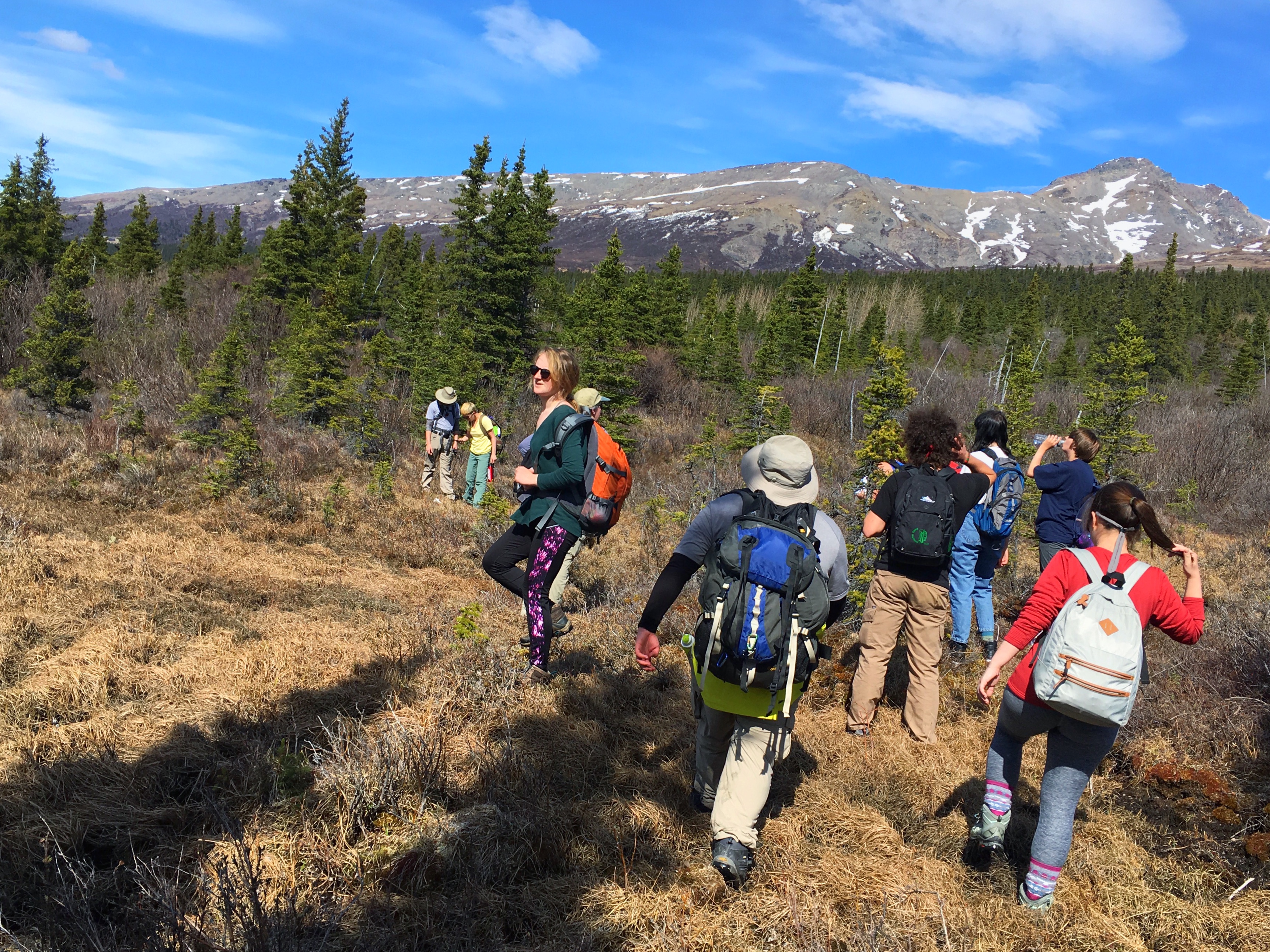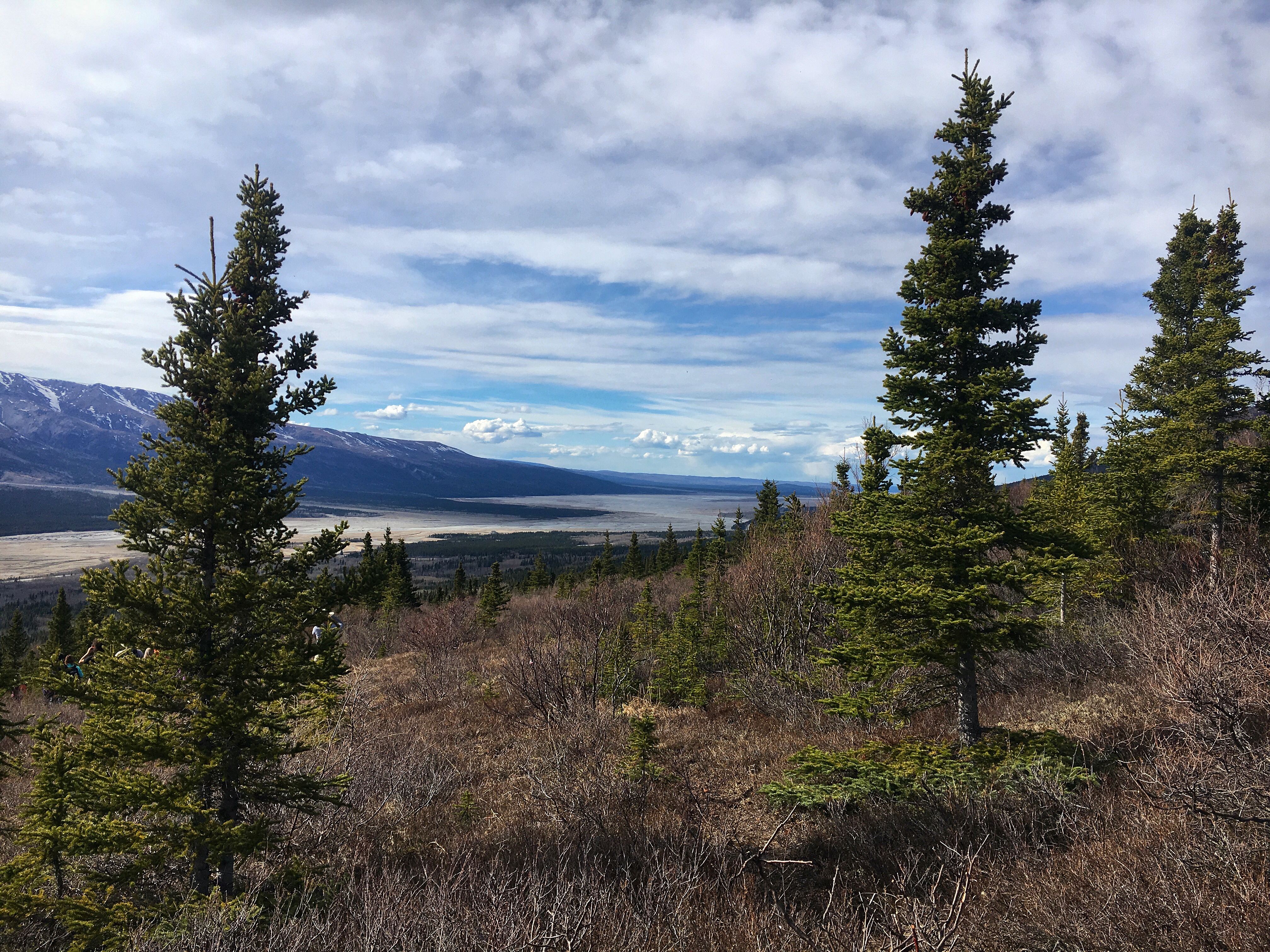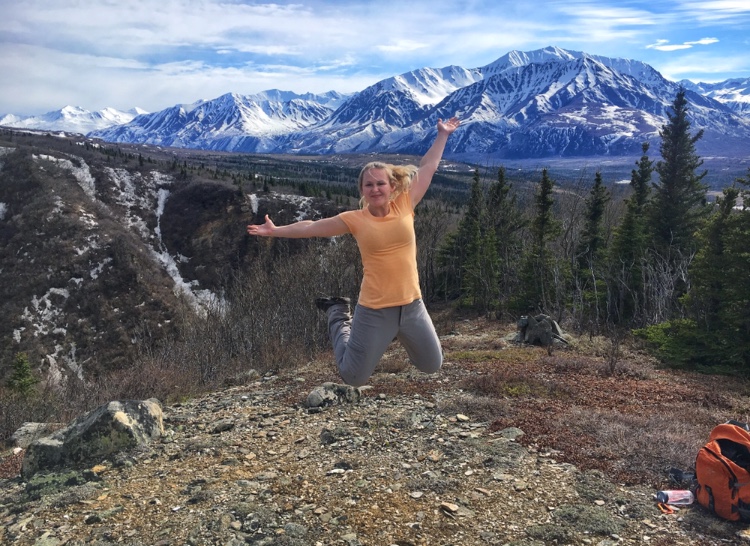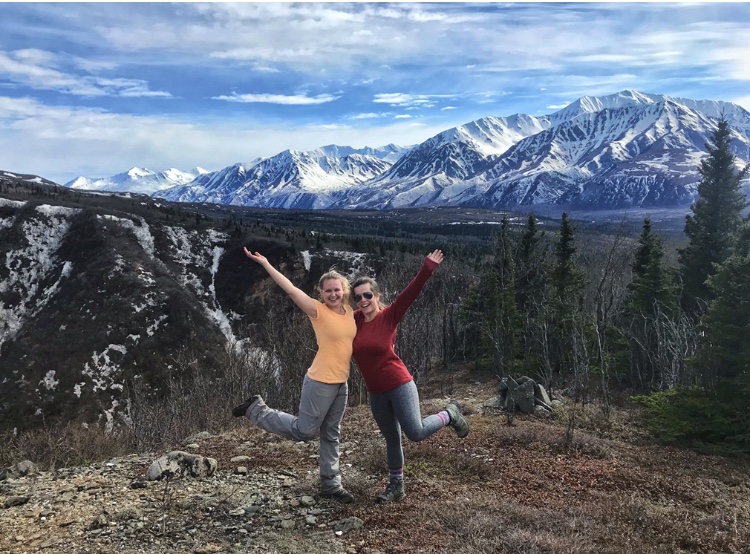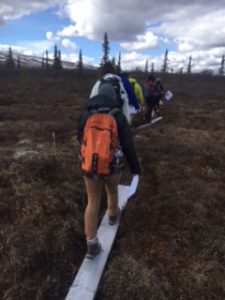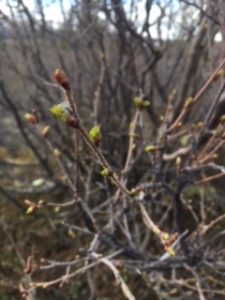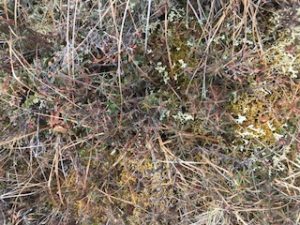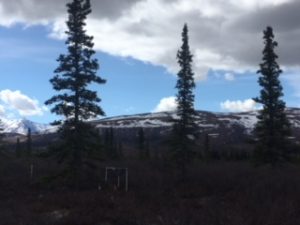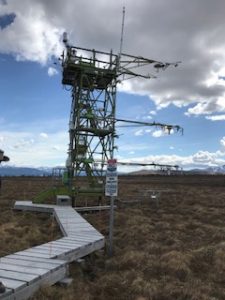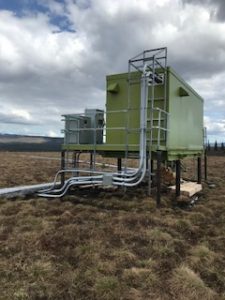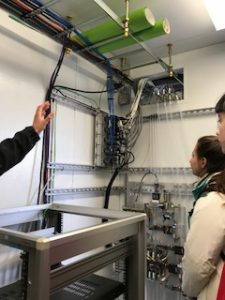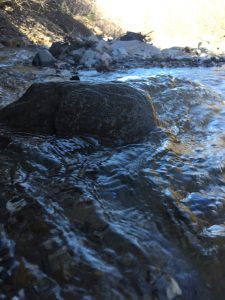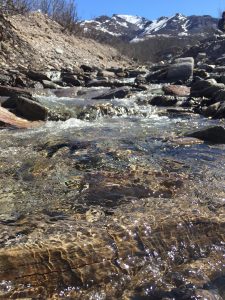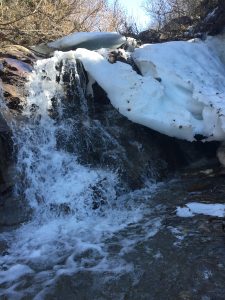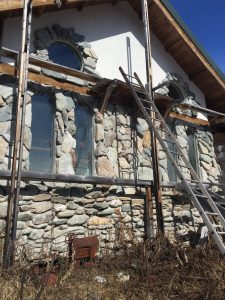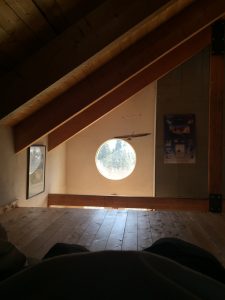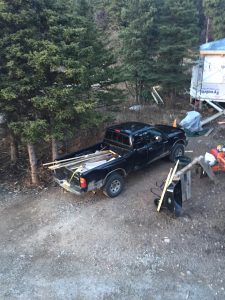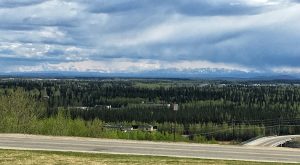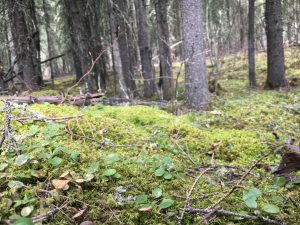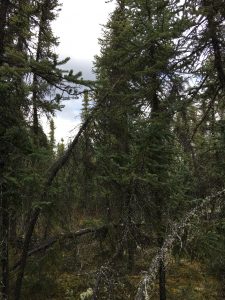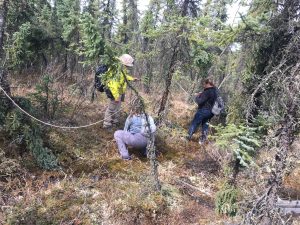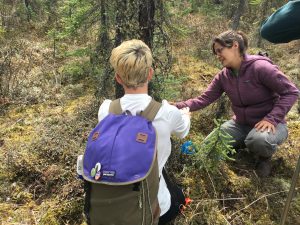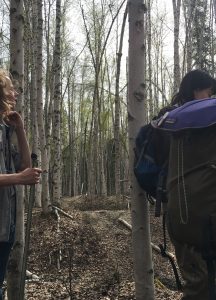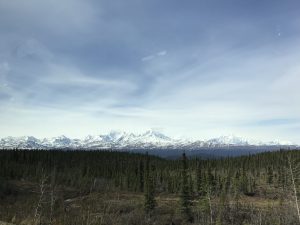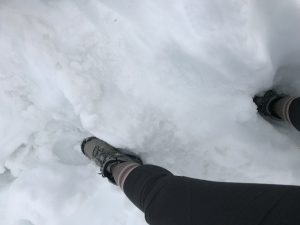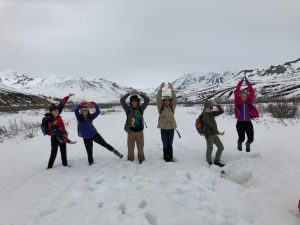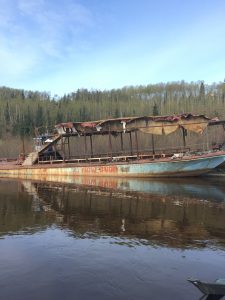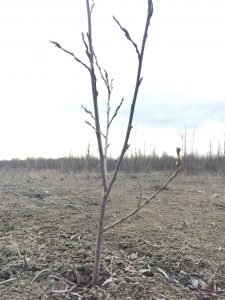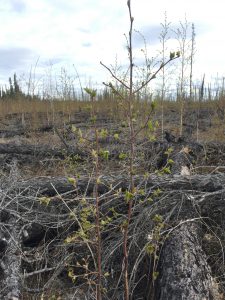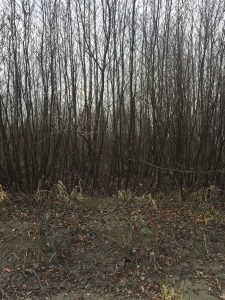The Long Term Ecological Research (LTER) group gave us a tour of a river on May 17, 2018. This group records data from many sights over long periods of time because the longer the collection period, the more useful the data. They brought 4 boats and had 4 researchers to drive the boats. My tour guide was Mark, the vegetation expert who knew all of the plants and mosses. I was really excited about the ability to learn about the different flora of Alaska. Along our boat ride, we made some cool stops to see some awesome wildlife, in particular a peregrine falcon which was nesting on the side of a mountain. The peregrine falcon is the fastest animal on earth, reaching up to 200 mph on the hunt. It was too far away for me to grab a picture, but some others in the class may have gotten some.
The falcon nest on the cliff face was at the bottom of ring of juniper shrubs. We actually have species of juniper in Ohio, but back home it exists as a full tree. The species in Alaska is only found on the sides of steep cliffs which don’t retain much water. The area we were traveling in was also not affected by glaciers during the last ice age, so the juniper and a few other species in the area may be refuge species which therefore have really old genes. By contrast, the glaciers did reach Columbus, which resulted in the relatively flat areas which contain some species carried south by glaciers, such as Eastern hemlock.
Along the way in the boats, Mark pointed out a white line where the water line usually is during the summer. As the temperature increases, glaciers melt and feed into the river, raising the water level. When we made our first real stop, we landed at a place where there weren’t many plants – just a sandbar. At some point, there was a step up into a scarce plant area. These were mostly sandbar willow (Salix exigua), which can be found around the Delaware Run. The step up was created by the build up of silt over time by the tide. Willow is the first step in primary succession -> turning ground with no previous plants into soil. It is a nitrogen fixer, putting essential nutrients into the silt and building up a bit of a biolayer. All of the willow was snipped at the same height as the snow cover because the snowshoe hairs came and ate whatever was above them.
We took another step up and went through a wall of shrub known as alder (Alnus viridis). Alder is the next stage in succession, and takes root once the ground is more solidified and nutrient fed, where it is responsible for creating about 98% of the nitrogen in the soil. It also creates a lot of leaf litter, which recycles plant nutrients back to the soil and builds up more of a biolayer. Just inside the wall was balsam poplar (Populus balsamifera). The leaves on these were not fully out yet, and as a result were sticky and smelled good.
The next spot for succession was the white spruce forest. White spruce (Picea glauca) usually grows in the understory of alder/poplar and at some point overtakes them. Alder is not very shade resistant, so when the spruce become taller, alder tend to die out. White spruce does not have the red hairs on it, but is otherwise commonly found around Alaska. This part of the forest starts to have a developed bed layer, mainly of feather moss. It also has a lot of rose thorns and mosquitoes. This area we were being shown was originally used as plots for fertilizer tests to see which nutrients were limiting the growth of plants. The ground at this point wasn’t really leaf litter, mostly feather moss.
Next, we landed at the black spruce (Picea mariana) forest. This was a non-vascular wonderland. There were many different kinds of mosses, likely created by the trapping of moisture. we learned to distinguish between sphagnum moss and feather moss. Within a handful of moss, Mark found about 4-5 different species of moss, the only one I really remember being liverwort. The only other tree species we saw was larch, also known as tamarack (Larix laricina), which can be found in Ohio as well. Many black spruce had a lichen on them called Old Man’s beard, which really looked like hair. Additionally, we found some reindeer lichen and another species where the only difference was a slight discoloration. My theory for the transition from white to black spruce is that once the white spruce have grown they have used all of the resources and then the black spruce are able to take root due to their resilience in a harsh environment. Underneath the black spruce was definite permafrost, only a couple centimeters below the surface.
Finally, we visited the site for secondary succession -> where a fire occurred and new growth was sprouting. This particular area was dominated by paper birch (Betula papyrifera) which was only about shoulder height. The ground had a lot of water, but not too many species of moss or anything. There was a lot of dead fireweed, which spawns initially after a fire. This area was a huge data collection site because it had data from before the fire. A lot of current research is focusing on what determines the kind of forest which spawns post-fire.
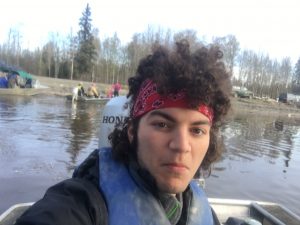
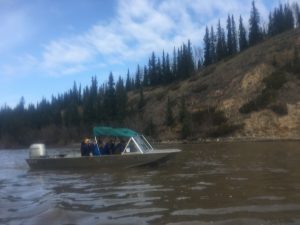
Boat ride
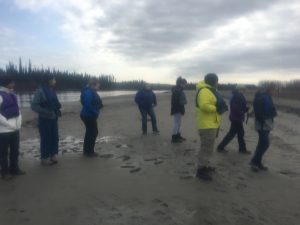
Sand bar, no plants yet
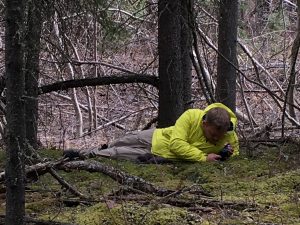
White spruce forest, with feather moss
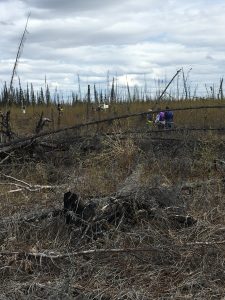
Post-fire area
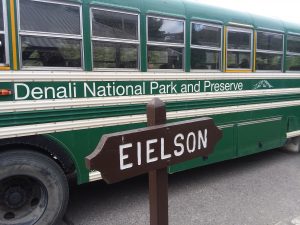 On Thursday, May 24th, the second to last day of our trip, we traveled into Denali National Park. At 9:00 AM, we got on our bus that would take us around 53 miles to Toklat. Round trip it was a trip that takes approximately six and a half hours to complete. It was amazing. The vistas there were like nothing else I had ever seen. It did evoke a similar emotion in me as the Southern Alps of New Zealand do, but the Alaskan mountains have a stateliness all to their own.
On Thursday, May 24th, the second to last day of our trip, we traveled into Denali National Park. At 9:00 AM, we got on our bus that would take us around 53 miles to Toklat. Round trip it was a trip that takes approximately six and a half hours to complete. It was amazing. The vistas there were like nothing else I had ever seen. It did evoke a similar emotion in me as the Southern Alps of New Zealand do, but the Alaskan mountains have a stateliness all to their own.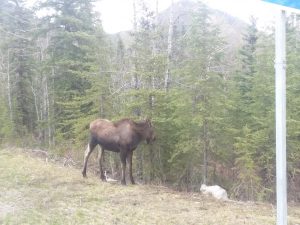 We also saw a huge amount of wildlife while there, much more than I expected. The sheer number of ptarmigan there was overwhelming, we counted at least eighty, but we must have seen a hundred or more. The flora is pretty consistent in Alaska, but as far as fauna goes for the most part we had only really seen ptarmigan, mosquitos, some really distant caribou, and some moose (which were huge and amazing and I love them). The famous Alaskan brown bear had yet to be seen. Until today at least. We saw I think seven it was on our excursion deep into the Denali National Park wilderness. Alongside that, add an extra nine caribou, bringing our caribou sightings up to around twelve or thirteen total. What I loved the most though were the moose. The first thing we saw when we began our drive in was a cow and her calf casually grazing alongside the road, and how beautiful they were. Moose are truly amazing creatures, they’re so large and powerful, but yet so calm and majestic. At least to me! We also saw a few other animals, a porcupine, a short-eared owl, a pika, and plenty of ground squirrels.
We also saw a huge amount of wildlife while there, much more than I expected. The sheer number of ptarmigan there was overwhelming, we counted at least eighty, but we must have seen a hundred or more. The flora is pretty consistent in Alaska, but as far as fauna goes for the most part we had only really seen ptarmigan, mosquitos, some really distant caribou, and some moose (which were huge and amazing and I love them). The famous Alaskan brown bear had yet to be seen. Until today at least. We saw I think seven it was on our excursion deep into the Denali National Park wilderness. Alongside that, add an extra nine caribou, bringing our caribou sightings up to around twelve or thirteen total. What I loved the most though were the moose. The first thing we saw when we began our drive in was a cow and her calf casually grazing alongside the road, and how beautiful they were. Moose are truly amazing creatures, they’re so large and powerful, but yet so calm and majestic. At least to me! We also saw a few other animals, a porcupine, a short-eared owl, a pika, and plenty of ground squirrels.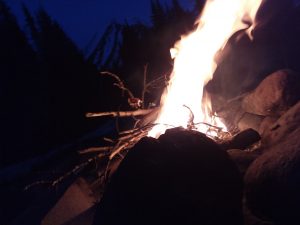 After the ride, we returned to the Denali park commons, Robert and I watched a movie about Denali wildlife and some safety tips to keep in mind around them. Very informative. After, we waited outside on Prof. Jackson and some others. Once we were ready, we left and returned to the hostel which we were staying at. Some people had decided to go on a hike in the park, so when Prof. Jackson went back to get them, Robert and I started a campfire in the pit at the hostel. When Craig returned, the group split in half, Craig and I and a few others going to Panorama, my favourite pizzeria/pub in Alaska. We hung out, and I met a super cool dude named Wilson, and when we came back we all hung out by the fire until we went to bed. I love Alaska.
After the ride, we returned to the Denali park commons, Robert and I watched a movie about Denali wildlife and some safety tips to keep in mind around them. Very informative. After, we waited outside on Prof. Jackson and some others. Once we were ready, we left and returned to the hostel which we were staying at. Some people had decided to go on a hike in the park, so when Prof. Jackson went back to get them, Robert and I started a campfire in the pit at the hostel. When Craig returned, the group split in half, Craig and I and a few others going to Panorama, my favourite pizzeria/pub in Alaska. We hung out, and I met a super cool dude named Wilson, and when we came back we all hung out by the fire until we went to bed. I love Alaska.
